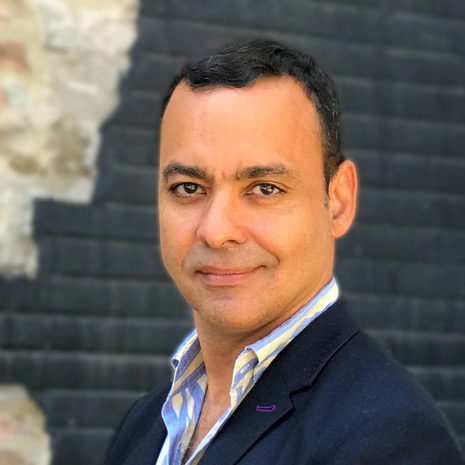
Orlando Saez – CEO of Aker

“A drone is not a solution, but rather an enabling automation technology.“
Tell us something about your current position and your professional background.
Orlando is the co-founder & CEO of Aker, a precision crop diagnostic data and service company based with active users in 21 countries. Orlando started his career in the telecommunications and wireless industry as a software developer. He has held C-level roles in several early-stage companies with a combined exit of over $50M. He holds a B.S. in Computer Engineering from the University of Puerto Rico, a Masters in Computer Science from the Illinois Institute of Technology and an MBA from IIT Stuart Graduate School of Business. Orlando admits that his life and career took a completely new dimension when he met his co-founder Todd Golly, a 6,000-acre corn/soybean farmer in southern Minnesota, USA several years ago.What are your perspectives on the drone in the next years?
In the next few years, we will see new drone frames to leverage beyond-line-of-sight regulation, the industry will continue to consolidate and there will be more service providers with deeper specialization and differentiation. In agriculture, I anticipate a widespread adoption of new drones going beyond remote sensing into automation or intervention capabilities such as spraying, harvesting, logistics orchestration, etc. Sensor resolution will improve. However, the quantity of data collected will require faster processing workflows and more relevant/timely recommended actions.The agriculture market received strong attention for the use of UAVs, and now some claim that the market is overhyped. Do you agree and if so, what needs to be changed?
Totally agree. UAV must do far more than just taking crop health images and videos. Many UAV service providers tout image/sensor resolution and their own analytics as a competitive over satellite or aerial imagery. The problem is that telling a deeper story is not sufficiently differentiation to command a price premium. Service providers must accept that price sensitivity and marginal value to customers is not the same when inspecting wireless towers or doing engineering surveys as compared to agriculture mapping, regardless of truck roll costs. Pick a lane and differentiate - otherwise, you will not survive.Which applications in the agriculture sector enjoy the highest demand today and which have the highest potential?
Today NDVI crop health maps for directed crop scouting continue to be the primary application. The resolution and on-demand advantages of drones over satellite and aerial images have a marginal competitive advantage today. Our team is working to create technology that effectively automates ‘’crop scouting’ or the process of collecting pest, and crop damage inside the canopy of crops during the growing season. We believe that this innovation is possible today, unlike 5 years ago, because of drone automation. I feel that this application has a high potential to improve the profitability and sustainability of farms around the globe.Reaching the end client is different in all industries. What is special in the agriculture sector and which information channels are recommended to reach the farmer?
The complexity in this industry including farm equipment, bio-engineering, chemical inputs, marketing and storage of crop harvest makes it impossible for a farmer no matter how small or large to afford be an expert in all these segments. Farming is a deep relationship-driven industry and farmers rely on trusted advisors to operate successfully. The age and diversity within the farming population also bring challenges on technology adoption and crop management methods across row, specialty and other crops. Farming is an offline industry where personal touch and relationships are essential to earning trust and market share.all experts- 1 Tell us something about your current position and your professional background.
- 2 What are your perspectives on the drone in the next years?
- 3 The agriculture market received strong attention for the use of UAVs, and now some claim that the market is overhyped. Do you agree and if so, what needs to be changed?
- 4 Which applications in the agriculture sector enjoy the highest demand today and which have the highest potential?
- 5 Reaching the end client is different in all industries. What is special in the agriculture sector and which information channels are recommended to reach the farmer?


